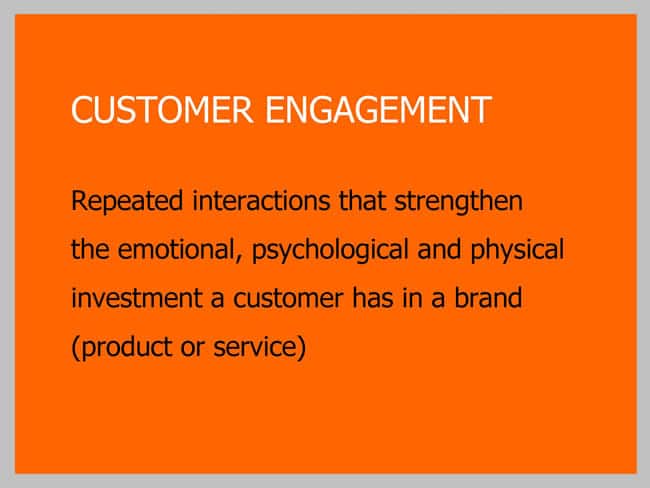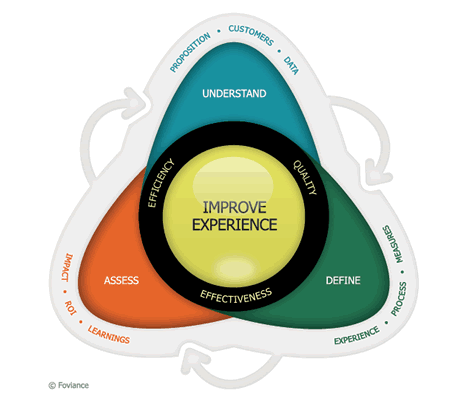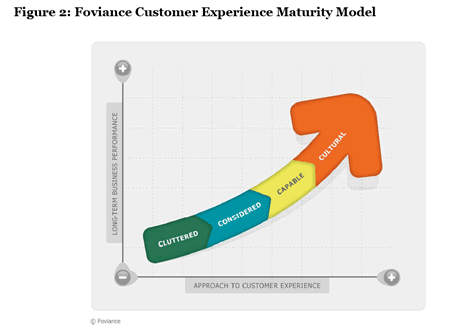If you occasionally read my posts here or elsewhere, you probably know by now that a consistent and valuable customer experience, a focus on business value through customer value, integrated marketing and a multichannel approach with a strong dose of social, content and customer-centricity are my favorite themes.
Actually, I don’t like the word customer-centric too much, I prefer the term ‘people-centric’. If you think about it, the word customer often makes us reduce the human reality to a strict commercial one that makes us blind and even leads to business mistakes.
Marketing only leads to results and “conversion” (the definition of this word is often too narrow as well) when we look at people in their global and at the same time individual social and emotional richness. Conversion is the direct result of a thorough excellence in everything we do as a company, taking the needs, behavior and experience of people as a starting point. So it shouldn’t come as a surprise that integrated customer experience management (CEM) is rapidly gaining importance.

At one of our i-SCOOP Fusion Marketing Experience events (in 2010, yet still relevant), design and CEM expert Richard Sedley gave a beautiful presentation on these and related multichannel customer engagement issues.
Why is the integrated customer experience so important?
Customer experience and conversion: keeping promises
Firstly, because a consistent and relevant (relevance is a matter of perception), user experience is directly linked to conversion. Ultimately, both are almost synonymous: conversion happens when you live up to expectations and promises, regardless of where and when. We usually look at conversion in technical terms or terms of channels and tactics (SEO, email and much more), but what ultimate makes someone click, buy, share or interact? Is it the call-to-action or the customer experience and your promise?
Customer experience and your brand
Secondly, the customer experience (interpret the word customer in the broadest sense possible) is crucial for a brand. The reputation of your brand is the perception of the “user” and all his “connections” in the most individual contact possible, regardless of time, place and person. Every interaction with a social object, a piece of content or an employee of your business impacts the perception and thus reputation of your brand ( and this is not a defensive definition of reputation). Certainly, in times where the importance of word of mouth, the shift from sale to buy, decreasing confidence/trust and the impact of community get clearer than ever. Yet, also on other areas your brand is key: strong brands sell and mean margin.
A matter of common sense, processes, people and a “single view”
There are various technologies and methods (the simple A/B or multivariate tests, sophisticated software to optimize applications from the user experience perspective and continuous loops of complex and real-life tests) to improve the customer experience.
However, ultimately, it’s mostly a matter of common sense and a pure client-or people-oriented culture within the company. Obtaining that culture is an organizational challenge and as such, it is even not enough.
You also need processes, systems and mechanisms to monitor the multichannel user experience and make sure you capture multi-channel interactions from channel-agnostic customers. That much is clear: customer experience and conversion transcend all media channels and activities, because people use various ways to find information and interact. They are truly media agnostic in doing this. It is also clear that a ‘single view’ on the client (CRM) is essential to achieve all this.
Where are companies in this far-reaching exercise? Seren, previously called Foviance, conducted a survey with Econsultancy and found that very few companies had succeeded in establishing integrated cross-channel processes and systems. The company developed a framework to improve the customer experience (it is not the only one), that you see below.

Processes and systems are not the biggest challenge

Thinking and working in silos is often the major obstacle. Succeeding. therefore, requires that all internal barriers, personal priorities, potential conflicts, overlapping channels and everything that is a hurdle to change is solved.
This requires a clear commitment from management and above all a firm management that can resist the internal pressure of scoring ” here and now.” The reality is that all these hurdles won’t be overcome. But there sure is a lot you can do. And don’t forget collaboration and the conditions to make it happen in doing so (a common sense of purpose, employee engagement, empowering staff and listening to their remarks, etc.).
Moreover, processes and systems are not the biggest challenge. That honor is reserved for developing a cross-divisional strategy that is purely focused on people.
It all sounds obvious but it is not and the reasons why it rarely happens today are not technical. Many businesses realize what should happen, yet few are able to actually make it happen.
Only 22% of the companies surveyed by Econsultancy and Seren (Foviance) had an integrated strategy to improve the customer experience. Practice has shown me that, while many companies like to boast about it, there are very few who are ready and really work in a customer-oriented way, especially when it boils down to internal organization.
It makes the work of a consultant who is focusing on these topics interesting but, admittedly, very often a disrupting and thus hard job, whereby achieving a shift of mentality and some form of cross-divisional “glue” is key, which leads to resistance. It’s probably a bit like the work of a project manager or consultant that works for an agency and comes up with a superb customer-centric and integrated strategy with proven ROI but, after presenting it and receiving congratulations from the customer, next hears “great, so when do we send a newsletter or build a Facebook page?.”
How far are you? The “Customer Experience Maturity Model”
To know how far you stand in terms of customer experience you can take a look at the “Customer Experience Maturity Model” of Seren below, which divides businesses into four types (note, there are always limitations and be honest with yourself).
The four types in the Customer Experience Maturity Model are:
Cluttered: operational systems and processes are tactical and driven by and through single channels. My experience: Many companies are still in that phase.
Considered: individual processes and systems are customer focused but lack links cross-channel. My experience: there’s also a good deal of businesses that perfectly match this typology.
Capable: the systems and processes are integrated but not fully harnessed cross-channel. My experience: I personally know very few companies that are this far. If you think you’re there, a simple question: is there a connection between the “goals” you define in your web analytics, the different needs of your “user” segments and your CRM? Or even simpler: do you really work customer focused across all business processes?
Cultural: systems and processes are fully integrated and harnessed cross-channel. Are some companies there yet? I personally do not know any. If you think you are, here is a first question: is your company structered depending on customer needs and business objectives, rather than based on traditional product and business functions? Is there someone who oversees a consistent customer experience while information and communication are fully customer-driven and cross-channel? Have you really removed all barriers to consistent interactions across multiple channels, making them integrated and enhancing the various contact moments they generate?

How far you can go in achieving a consistent people-centric and cross-channel customer experience and manage it, depends on many factors, but in practice, there is much work to do. The question is also: how far dare and can you go?
To do it, change is inevitable, as is solid advice, but most of all it requires a strong management buy in and support, aiming to break the corporate customer-centricity status quo and to convince everyone why it has to be so. Exactly this is often an issue.
Read more about Richard’s keynote at the Fusion Marketing Experience: “Richard Sedley: social engagement and mobile marketing magic” and check out the presentation below.
The full downloadable presentation is only available for i-SCOOP customers and attendees of our events.

